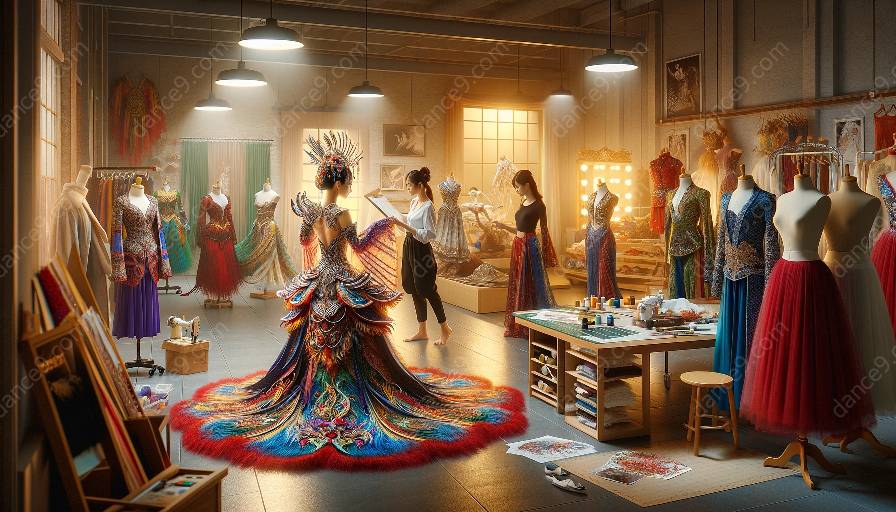Dance and Costume Design: A Powerful Visual Collaboration
Costume design plays a crucial role in shaping the audience's perception of dance. When it comes to performing arts, the combination of movement and visual aesthetics often has a profound impact on the viewer. In the context of dance, costume design goes beyond mere attire; it becomes an integral part of the storytelling process, amplifying emotions, and enriching the overall artistic experience.
The Visual Language of Dance
Dance is a visual art form that communicates through the language of movement. However, the visual impact of dance is not limited to the movements of the performers alone. The costumes worn by dancers contribute significantly to the overall visual narrative. Whether it's the graceful flow of a ballerina's tutu or the vibrant colors of a traditional folk dance attire, costumes add depth and dimension to the performance, capturing the audience's attention and enhancing the storytelling aspect of the choreography.
Establishing Character and Context
Costumes serve as a tool for character development and context establishment in dance performances. Through the careful selection of fabrics, colors, and designs, costume designers help portray the essence of a character and the cultural, historical, or thematic setting of a dance piece. A costume can instantly transport the audience to a specific time period or geographical location, allowing them to connect with the performance on a deeper level and understand the underlying narrative without the need for spoken words.
Enhancing Movement and Expression
Moreover, costume design has the power to enhance the movement and expression of dancers. The choice of fabrics and construction of costumes are tailored to accommodate and accentuate the movements and techniques involved in a particular style of dance. From the fluidity of contemporary dance costumes to the structure of flamenco dresses, each attire is meticulously crafted to complement and elevate the physicality of the performance, adding an extra layer of visual appeal to the dance piece.
Evoking Emotions and Atmosphere
Costumes contribute significantly to the emotional atmosphere of a dance performance. The visual appeal of costumes has the ability to evoke specific emotions and enhance the overall mood of the piece. Whether through the use of color psychology, symbolic elements, or avant-garde designs, costumes can create a sensory experience for the audience, eliciting feelings of joy, sorrow, excitement, or contemplation, and guiding the viewers through a multi-sensory journey
Creating Memorable Visual Experiences
Ultimately, the collaboration between dance and costume design aims to create memorable visual experiences for the audience. When the elements of movement and attire are seamlessly intertwined, they form a cohesive visual narrative that resonates with the viewers long after the performance concludes. The fusion of choreography and costumes creates a holistic experience that stimulates the audience's imagination, leaving a lasting impression and shaping their perception of the dance piece.
The Intersection of Artistry and Impact
In summary, costume design significantly impacts the audience's perception of dance by enriching the visual language of movement, establishing character and context, enhancing movement and expression, evoking emotions and atmosphere, and ultimately creating memorable visual experiences. Through the symbiotic relationship between dance and costume design, performers and designers have the opportunity to coalesce their artistic visions, captivating audiences and weaving visual stories that transcend the boundaries of language and culture.











































